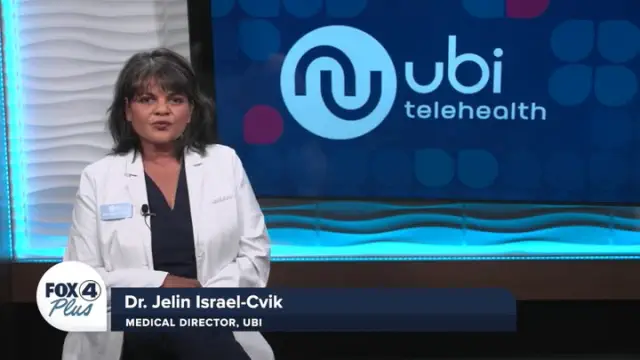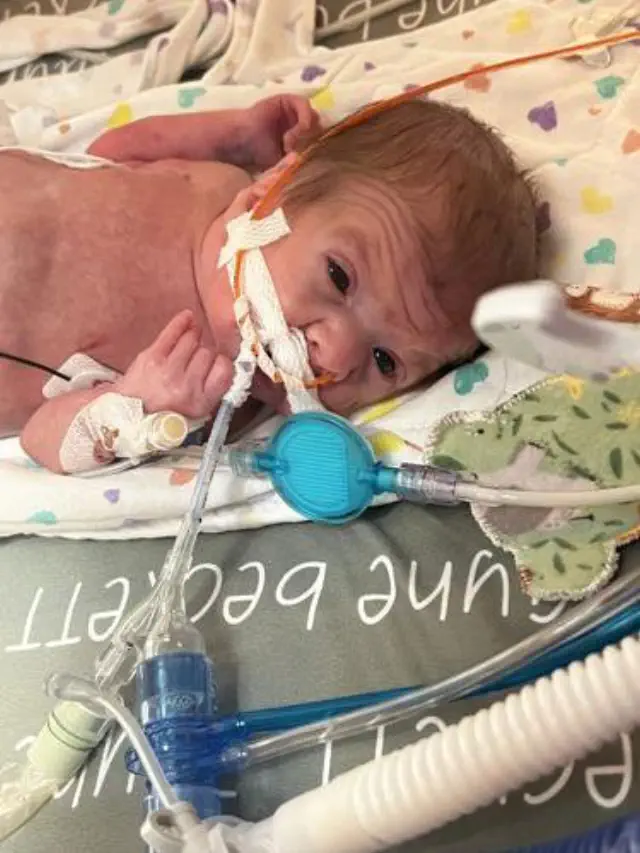Mary and Daniel recount their experiences as caregivers navigating the journey of CAR T therapy for large B-cell lymphoma.

View pictures in App save up to 80% data.
Bristol Myers Squibb Company
Caregiving encompasses a variety of roles, frequently necessitating a significant adjustment in one's everyday routine. For patients, dealing with a medical condition is a formidable obstacle, but for caregivers, the emotional, logistical, and personal challenges associated with providing care create their own unique struggles.
Mary's caregiving experience started just a year after she and her husband, Dean, embraced retirement together. Their aspirations for this new chapter were abruptly altered when Dean received a diagnosis of large B-cell lymphoma (LBCL), a form of non-Hodgkin’s lymphoma. As they faced the challenges of his treatment, they held onto hope. However, in 2020, they learned that the lymphoma had recurred. Even after trying various treatments, the outcomes were disappointing, leading them to explore alternative options in their battle against his illness.
A few years back, Daniel and his wife, Astrid, encountered significant challenges when, at the age of 29, she received a diagnosis of a rare and aggressive form of LBCL. This situation compelled the newly married couple to leave their life in Washington, D.C., and move back to Houston, Texas, for medical care. Even with treatment, Astrid's cancer persisted in its progression, leading them to face tough choices and an unsettling uncertainty about their next steps.
Both Mary and Daniel cared for their loved ones during their treatment with the cell therapy, Breyanzi® (lisocabtagene maraleucel), a one-time infusion used to treat adults with relapsed or refractory LBCL. Drawing from their unique experiences, five insights are offered for managing the chimeric antigen receptors (CAR) T cell therapy journey as a caregiver.

View pictures in App save up to 80% data.
Breyanzi, a prescription medicine, treats LBCL when your first treatment has not worked or your cancer returned within a year, which may include those who are not eligible for a hematopoietic stem cell transplantation because of medical conditions or age. See full indications further below.
Breyanzi can cause serious life-threatening side effects, such as cytokine release syndrome, neurologic toxicities and secondary malignancies. Please see the important safety information further below.
1) Recognize your responsibilities as a caregiver to pinpoint the areas where assistance is most required.
Many caregivers perceive their role in straightforward ways, primarily as supporters of those receiving treatment. However, grasping the comprehensive nature of their responsibilities is crucial. For Mary, her approach was straightforward: “His only job is to heal.” As Dean concentrated on his recovery, she took on both the physical and emotional burdens of his care, responsibilities she had not faced before. Through this experience, she learned that recognizing one’s strengths—whether it’s a knack for control or an ability to navigate unpredictability—can clarify a caregiver’s role and highlight the distinct support they can offer.
In a similar vein, Daniel chose to be a steady and reassuring presence for his wife. With Astrid's background in the medical field, he dedicated his efforts to assisting her in navigating daily challenges, whether it was finding ways to ease her discomfort during tough symptom flare-ups or handling practical matters like insurance claims and hospital arrangements. He realized that being a good listener was essential. "My primary role was to be there for her throughout the treatment process. While I can't always improve the situation, especially during difficult times, I can help alleviate some of the burdens," he shared. By understanding what strategies resonated with Astrid and which ones fell short, Daniel was able to advocate for her needs and empower others to do the same.
2) Establish a solid connection with the care team of your loved ones.
Neither Mary nor Daniel knew what it would be like living and coping with their spouses’ diagnosis of LBCL. However, they quickly recognized the vital role their care teams played in navigating the complexities of the disease.
The team, which comprised their physician, nurse coordinator, and social worker among others, offered not just expert medical treatment but also emotional encouragement, ensuring they felt assured and well-informed throughout the entire process.

View pictures in App save up to 80% data.
The care teams were instrumental in evaluating treatment choices and identifying what was most important to them. “We had an excellent educational session with the doctor, and the entire family was present — it truly made a significant impact,” Mary remembered.
This type of support allowed Mary and Daniel to help make decisions with their partner that aligned with their values and comfort levels, including choosing Breyanzi CAR T cell therapy as part of the treatment plan.
Having a reliable team was crucial when facing difficult choices. Daniel expressed, “Asking questions is key. With only a handful of people present, it's okay not to have all the answers. It brings comfort to know how skilled our care team is.”
3) Create a supportive community you can rely on
Throughout their spouses’ cancer journey, Mary and Daniel both recognized the vital role of a solid support network for themselves and those they cared about, even before the cell therapy process commenced. Mary utilized an online message board to keep friends and family informed about Dean’s health, fostering an emotional support community. The encouraging messages and comments they received provided solace during treatment and helped them maintain a sense of connection to their home. For Daniel and Astrid, a significant reason for relocating to Houston was the proximity of their family. With Daniel's parents close by and Astrid's parents just a few hours away, they could count on family members to assist with everyday tasks, which was particularly beneficial as Daniel balanced a full-time job with caring for Astrid.
Recognizing the specific support they required and setting realistic expectations was crucial. Although no one could completely ease the fear or physical pain experienced by Dean or Astrid, Mary and Daniel understood that even minor gestures could have a significant effect. As Mary expressed, “It was vital to understand how others could assist, whether that meant providing a meal, running errands, or simply reaching out to see how we were doing. It was incredibly reassuring to know we weren’t facing this alone.” Daniel shared a similar perspective, stating, “People genuinely want to help, but it’s essential to establish clear expectations. Little acts of kindness truly matter, especially when they align with the support we need.”
4) Understand the procedure involved in CAR T Cell therapy.
A cell therapy treatment, such as Breyanzi, is particularly intricate as it is made from a patient’s own T cells, a type of white blood cell, which have been reprogrammed to find and destroy specific cells, which may include cancer cells and normal cells. With the goal of achieving remission, the process involves multiple steps over the span of a few months: blood collection, the creation of CAR T cells, a one-time infusion, and short- and long-term monitoring for side effects. Mary and Daniel each played a crucial role in helping their loved ones weigh the pros and cons, understanding that the treatment provided a unique, personalized approach to address their disease.
Each patient's reaction to CAR T therapy varies, making it crucial to be well-prepared and adaptable throughout the process. They engaged in discussions with their healthcare team regarding the advantages and potential side effects, including serious risks like cytokine release syndrome (CRS), an elevated risk of life-threatening infections, reduction in various blood cell types, neurological toxicity, secondary cancers, along with more common side effects such as fatigue, fever, muscle aches, intense nausea, vomiting, diarrhea, and headaches. Nevertheless, with a solid grasp of the procedure and the backing of their healthcare team, they confidently proceeded with CAR T cell therapy.
5) Approach each day one at a time and appreciate the little things.
During their expedition, Mary and Daniel frequently encountered daunting situations, concentrating solely on the next step ahead. Yet, they soon discovered that by dividing their journey into smaller, achievable tasks, they remained focused and tackled the obstacles more successfully. As Daniel wisely stated, “It’s important to take it one day, one minute at a time.”
Through appropriate care and a consistent mindset, they not only navigated the emotional hurdles but also discovered instances of tranquility and fortitude. They realized that by concentrating on the here and now and valuing the positive experiences, they could maintain their emotional strength and continue progressing with optimism.
"You need to remain focused, even during tough times. By concentrating on what you can manage and approaching each day as it comes, we were able to persevere," Mary shared.
At present, Mary and Daniel are cherishing the time they have away from hospital visits, as their partners are in remission. Despite the challenges they’ve faced, Mary and Dean are relishing valuable moments with their grandchildren, while Daniel and Astrid are making unforgettable memories together as a family. By sharing their journeys, these couples aim to provide solace and encouragement to others who are looking after their loved ones.
To learn more about Breyanzi for the treatment of adults with relapsed or refractory large B-cell lymphoma, visit Breyanzi.com or speak with a doctor.
USES
BREYANZI is a prescription medication indicated for the treatment of a specific form of non-Hodgkin lymphoma:
- Large B cell lymphoma, when:
- your initial treatment was ineffective or your cancer has recurred within a year following your first treatment, OR
- if your initial treatment was unsuccessful or if your cancer has recurred following that treatment, and you cannot undergo hematopoietic stem cell transplantation due to health issues or age constraints, OR
- At least two different types of treatments have proven ineffective or have ceased to provide results.
BREYANZI stands out from other cancer treatments as it utilizes your own white blood cells, which are genetically altered to identify and target your lymphoma cells.
CRUCIAL SAFETY ALERT
The most important information to know about BREYANZI includes its indication, mechanism of action, potential side effects, and administration details. BREYANZI is a CAR T-cell therapy used for treating certain types of large B-cell lymphoma in adults. It works by modifying the patient’s own T-cells to target and destroy cancer cells. Common side effects may include cytokine release syndrome, neurological effects, and infections. It is administered as a single intravenous infusion after the collection and processing of the patient’s T-cells. Always consult with a healthcare professional for personalized information and guidance regarding treatment.
BREYANZI has the potential to cause severe side effects that could be life-threatening and may result in death. If you experience any of the following symptoms, it is crucial to contact your healthcare provider or seek emergency assistance immediately:
- difficulty breathing
- fever (100.4°F/38°C or higher)
- chills/shaking chills
- confusion
- severe nausea, vomiting, diarrhea
- fast or irregular heartbeat
- dizziness/lightheadedness
- severe fatigue or weakness
It is crucial to inform your healthcare professionals that you have been treated with BREYANZI and to present your BREYANZI Patient Wallet Card. Your healthcare provider might prescribe additional medications to help manage any side effects you experience.
Prior to receiving BREYANZI, inform your healthcare provider about any medical issues you may have, including whether you currently have or have previously experienced:
- Neurologic problems (such as seizures, stroke, or memory loss)
- Lung or breathing problems
- Heart problems
- Liver problems
- Kidney problems
- A recent or active infection
Tell your healthcare provider about all the medications you take, including prescription and over-the-counter medicines, vitamins, and herbal supplements.
What is the process for receiving BREYANZI?
- BREYANZI is made from your own white blood cells, so your blood will be collected by a process called leukapheresis.
- It takes about 3-4 weeks from the time your cells are received at the manufacturing site and are available to be shipped back to your healthcare provider, but the time may vary.
- Before you get BREYANZI, you will get 3 days of chemotherapy to prepare your body.
- When your BREYANZI is ready, your healthcare provider will give it to you through a catheter placed into your vein (intravenous infusion). BREYANZI is given as infusions of 2 different cell types.
- You will be administered infusions of one type of cell, which will be closely followed by infusions of a different cell type.
- The duration of the infusion may differ, but it typically takes under 15 minutes for each of the two cell types.
- During the first week after infusion, you will be monitored daily by the facility where you received your treatment.
- You should plan to stay within 2 hours of the location where you received your treatment for at least 4 weeks after getting BREYANZI. Your healthcare provider will check to see that your treatment is working and help you with any side effects that may occur.
- You may be hospitalized for side effects. Your healthcare provider will discharge you if your side effects are under control, and it is safe for you to leave the hospital.
- Your healthcare provider will want to do blood tests to follow your progress. It is important that you do have your blood tested. If you miss an appointment, call your healthcare provider as soon as possible to reschedule.
After receiving BREYANZI, it's important to avoid certain activities and substances to ensure your safety and the effectiveness of the treatment. Here are some things to consider avoiding: 1. **Infection Risks**: Stay away from crowded places and avoid close contact with people who are sick to reduce the risk of infections. 2. **Live Vaccines**: Do not receive any live vaccines while undergoing treatment with BREYANZI, as your immune system may be weakened. 3. **Alcohol**: Limit or avoid alcohol consumption, as it can interact with medications and affect your recovery. 4. **Certain Medications**: Consult your healthcare provider about any other medications or supplements you are taking, as some may interact with BREYANZI. 5. **Strenuous Activities**: Avoid intense physical activities or exercise until your doctor gives you the go-ahead, as your body may need time to recover. Always follow your healthcare provider's specific recommendations regarding post-treatment care and lifestyle adjustments.
- Do not drive, operate heavy machinery, or do other activities that could be dangerous if you are not mentally alert, for at least 8 weeks after you get BREYANZI. This is because the treatment can cause temporary memory and coordination problems, including sleepiness, confusion, dizziness, and seizures.
- Do not donate blood, organs, tissues, or cells for transplantation.
What are the potential or commonly observed side effects of BREYANZI?
The frequently observed side effects of BREYANZI include:
- fatigue
- difficulty breathing
- fever (100.4°F/38°C or higher)
- chills/shaking chills
- confusion
- difficulty speaking or slurred speech
- severe nausea, vomiting, diarrhea
- headache
- dizziness/lightheadedness
- fast or irregular heartbeat
- swelling
- low blood pressure
- muscle pain
BREYANZI has the potential to elevate the risk of severe infections that could be fatal. If you experience fever, chills, or any other indications of an infection, promptly inform your healthcare provider.
BREYANZI may reduce the levels of certain blood cells, including red blood cells, white blood cells, or platelets. Following your treatment, your healthcare provider will conduct blood tests to monitor this. It's important to inform your healthcare provider immediately if you experience a fever, fatigue, or any signs of bruising or bleeding.
BREYANZI may elevate your risk of developing cancers, including specific forms of blood cancers. It is important for your healthcare provider to keep an eye on this.
The presence of BREYANZI in your system could lead to inaccurate results on certain commercial HIV tests, potentially resulting in a false-positive outcome.
These are not all the possible side effects of BREYANZI. Call your doctor for medical advice about side effects. For more information, go to BREYANZI.com or call 1-888-805-4555. You may report side effects to the FDA. Visit www.fda.gov/medwatch or call 1-800-FDA-1088.
Please see full Prescribing Information, including Boxed WARNINGS and Medication Guide.
The editorial and news team at USA TODAY Network did not participate in the production of this content.










